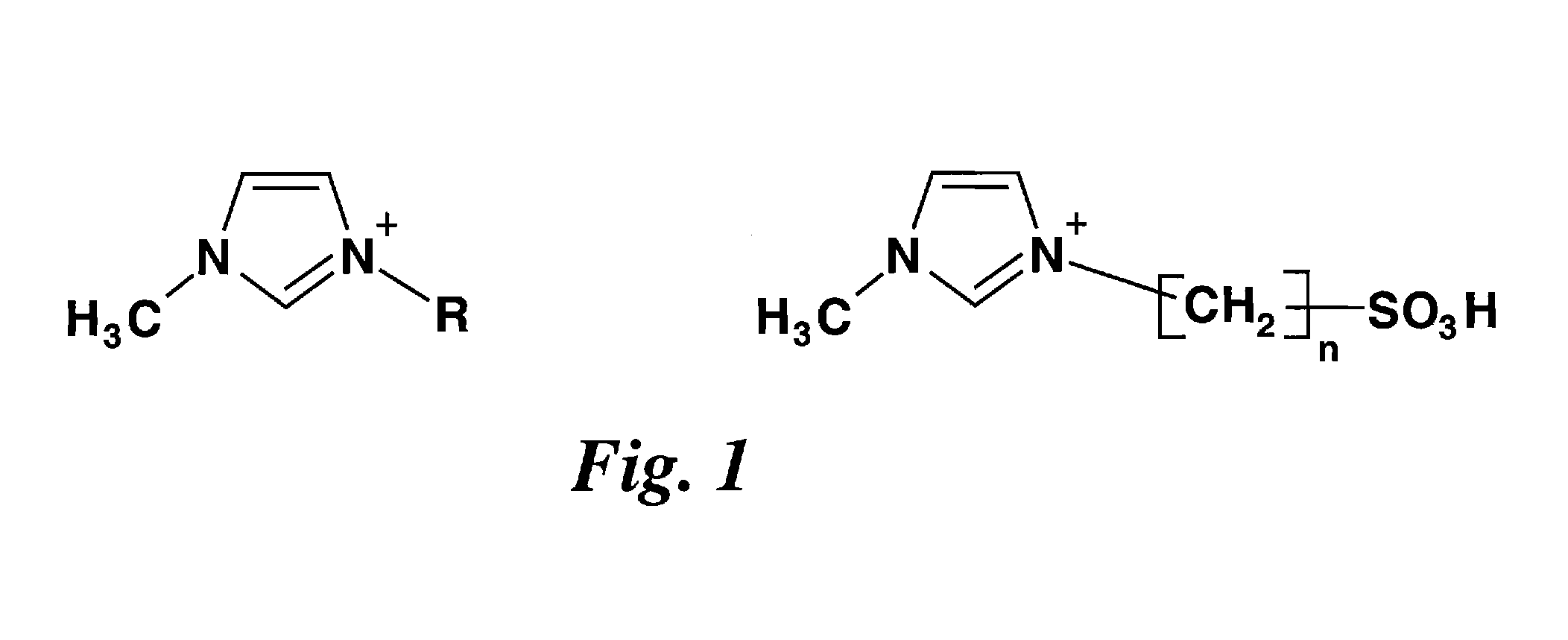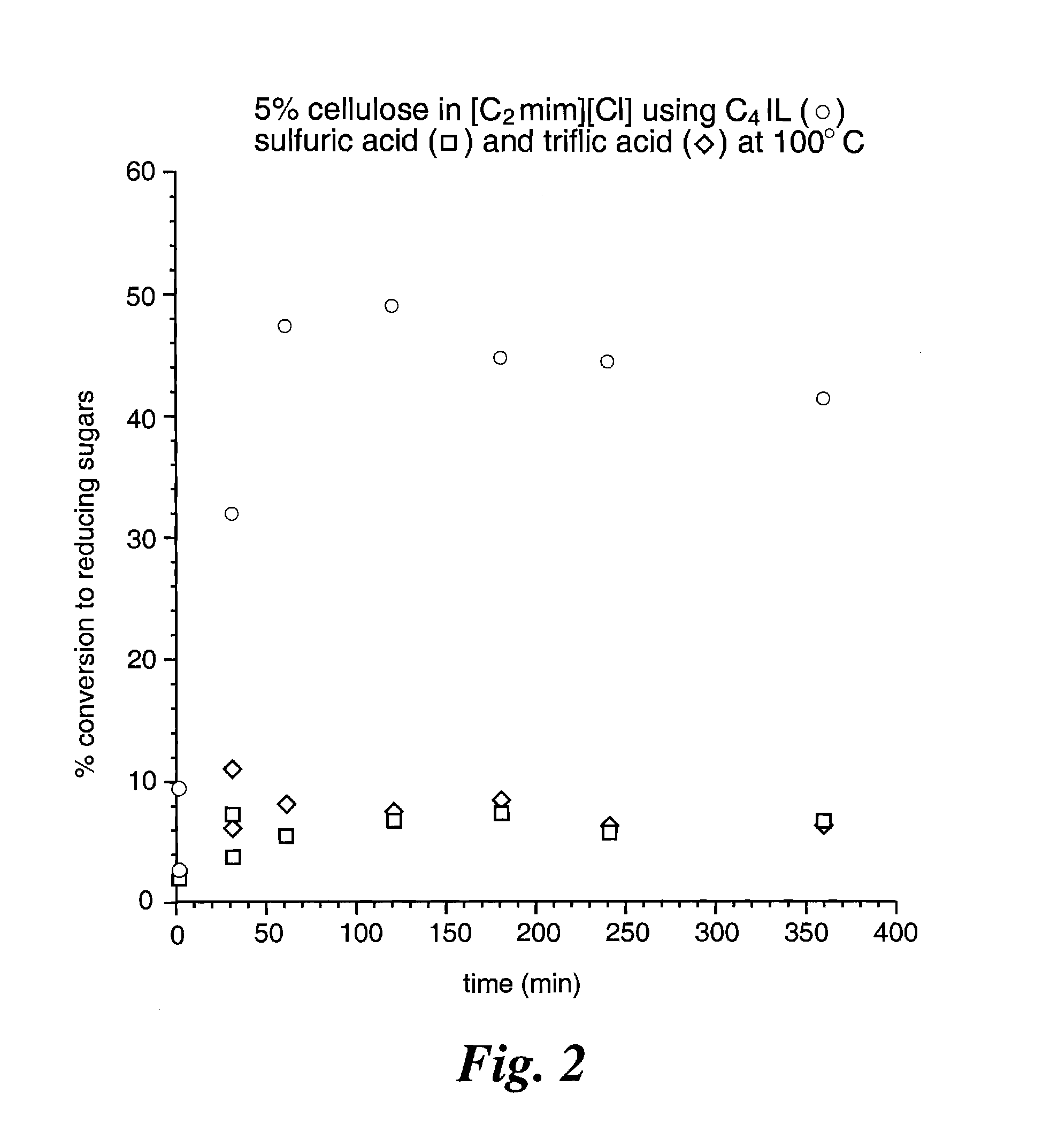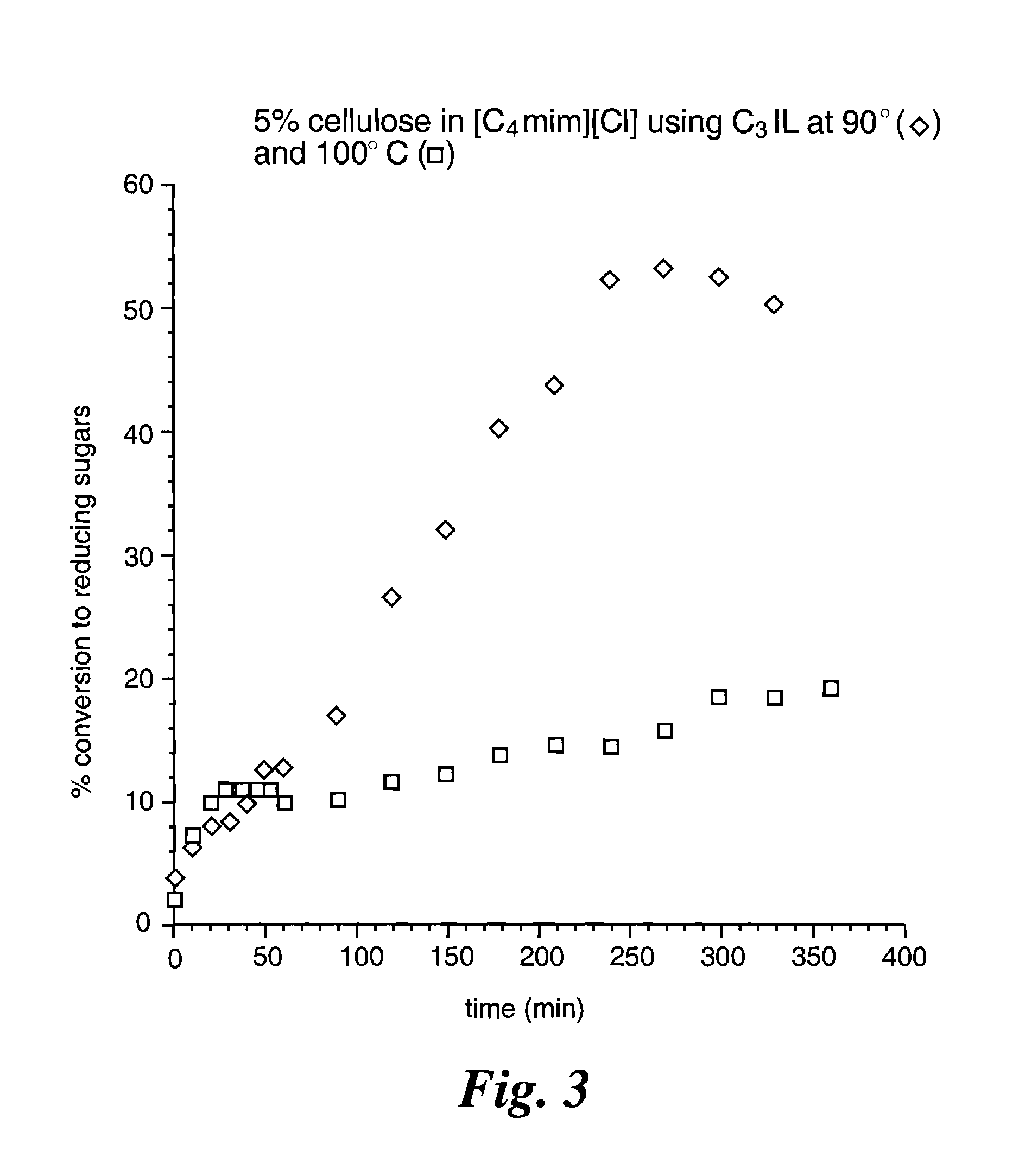Ionic liquids processing of biomass to reducing sugars and other dehydration products
- Summary
- Abstract
- Description
- Claims
- Application Information
AI Technical Summary
Benefits of technology
Problems solved by technology
Method used
Image
Examples
Embodiment Construction
[0017]The conversion of dissolved cellulose into reducing sugars and other products is a technique by which the dissolved cellulose reacts more readily with a Brønsted acid derived ionic liquid. The ionic liquid solvent does this by disrupting the hydrogen bonded supramolecular structure of the cellulose allowing the ionic liquid catalyst to hydrolysis the β-glycosidic bonds producing small glucose oligimers and various reducing sugars. The combination of the ionic liquid solvent and ionic liquid catalyst results in a homogeneous solution increasing the efficiency of the conversion of cellulose into dehydration products.
[0018]As used herein the term “ionic liquid solvent” refers to a liquid that is comprised of cations and anions. Ionic liquids are attractive solvents as they are non-volatile, non-flammable, have a high thermal stability, are relatively inexpensive to manufacture, are environmentally friendly, and can be used to provide greater control and flexibility in the overall...
PUM
 Login to View More
Login to View More Abstract
Description
Claims
Application Information
 Login to View More
Login to View More - Generate Ideas
- Intellectual Property
- Life Sciences
- Materials
- Tech Scout
- Unparalleled Data Quality
- Higher Quality Content
- 60% Fewer Hallucinations
Browse by: Latest US Patents, China's latest patents, Technical Efficacy Thesaurus, Application Domain, Technology Topic, Popular Technical Reports.
© 2025 PatSnap. All rights reserved.Legal|Privacy policy|Modern Slavery Act Transparency Statement|Sitemap|About US| Contact US: help@patsnap.com



